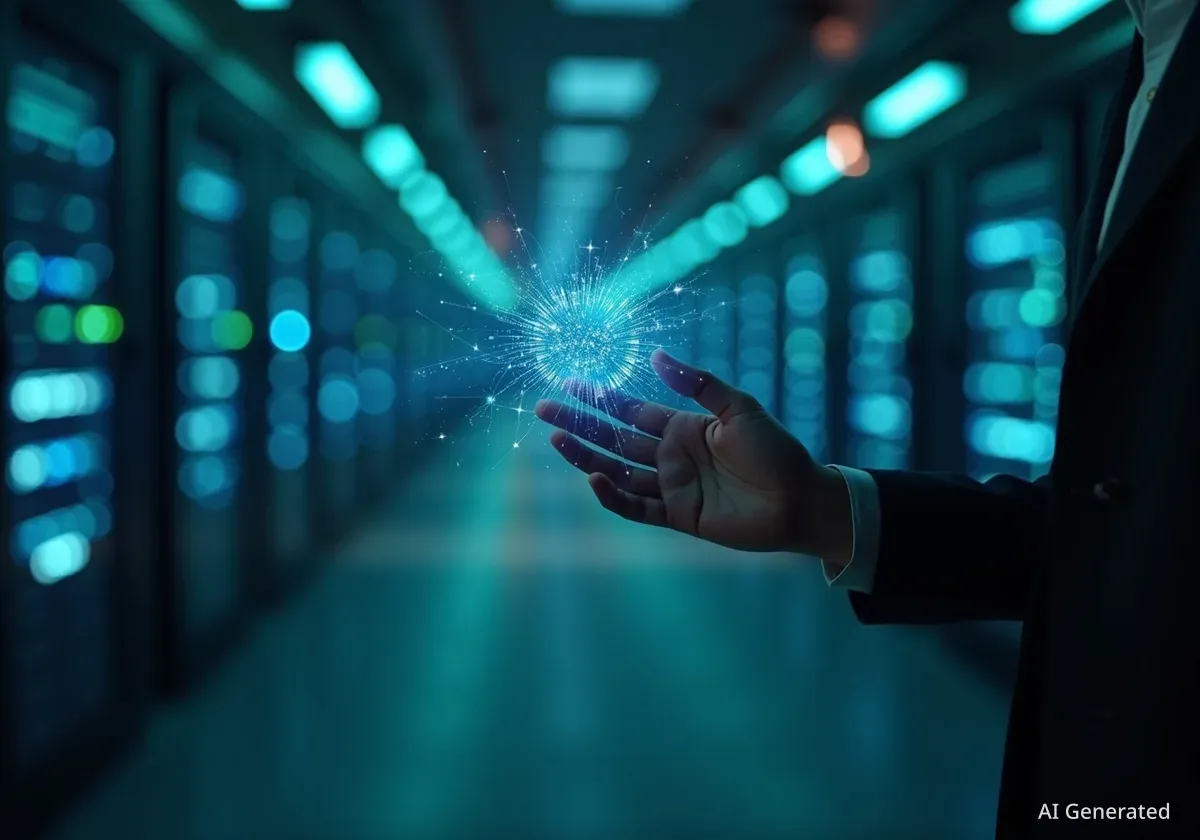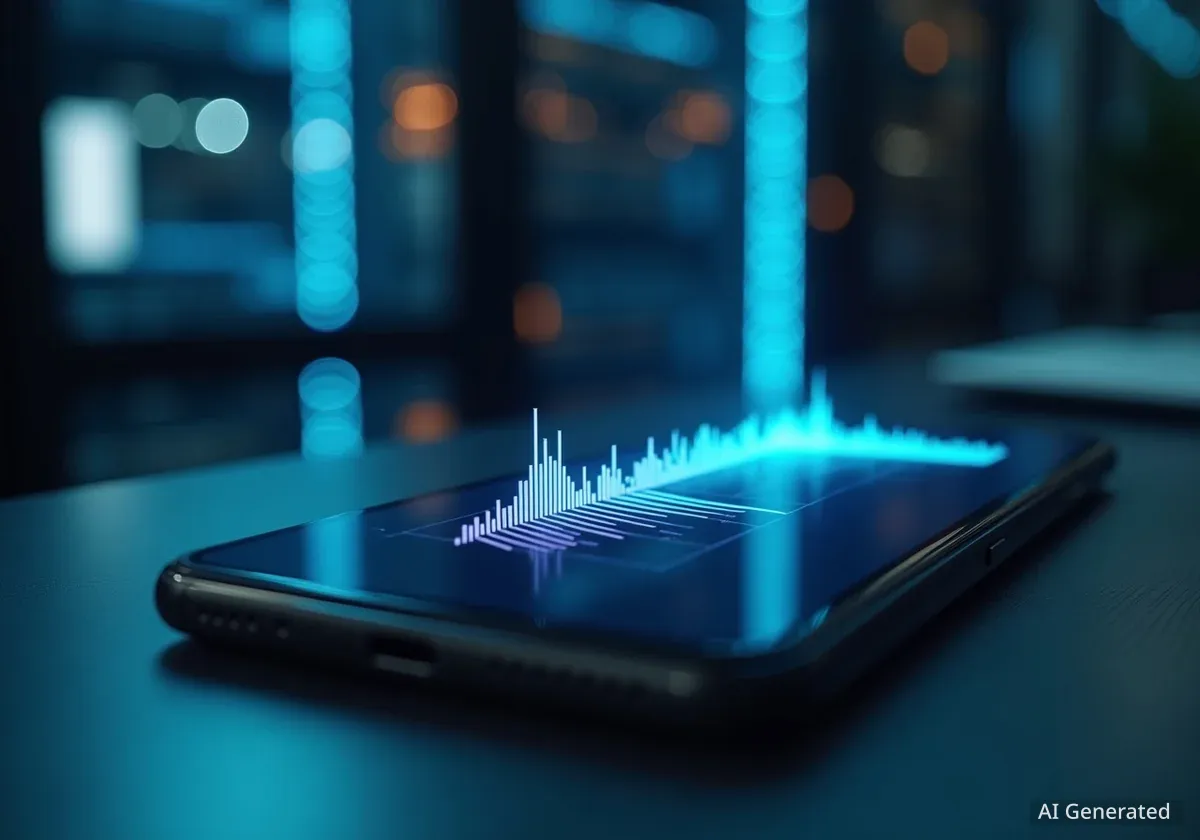Technology influencer Varun Mayya has raised concerns about the increasing sophistication of artificial intelligence-generated deepfakes, stating that it is becoming significantly harder to differentiate between real and synthetic content. As AI tools advance, the potential for misuse in creating deceptive media grows, posing new challenges for public trust and security.
Key Takeaways
- Varun Mayya warns that real-time AI video generation will lead to more creative and convincing scams.
- New AI models, such as Alibaba's Wan 2.2, can produce highly realistic videos, making detection difficult.
- The public is expressing growing concern, with many calling for stricter regulations on AI-generated content.
- The core issue is the rapid improvement in AI's ability to create content that is nearly indistinguishable from reality.
The Challenge of Distinguishing Real from Fake
The ability to identify AI-generated content is diminishing as the underlying technology becomes more powerful. Varun Mayya highlighted this trend, emphasizing the speed at which these tools are evolving. His warning points to a future where real-time deepfake generation could become commonplace.
This development has significant implications for online security and information integrity. Scammers have already utilized AI-generated videos to impersonate well-known individuals, often to promote fraudulent investment opportunities or other financial schemes.
"Once this tech becomes real-time and even faster to generate, these scams are only going to get more creative," Mayya stated.
The primary concern is the level of realism now achievable. Early deepfakes often had noticeable flaws, such as unnatural movements or visual artifacts. However, modern AI models have largely overcome these limitations, producing smooth, high-quality video that can easily deceive the average viewer.
An observer of the technology noted the rapid pace of improvement, commenting, "It looks AI generated for sure. But in upcoming time, it would look real." This sentiment captures the widespread apprehension about a near-future where digital content can no longer be taken at face value.
Advanced AI Models Fueling Realism
A key driver of this technological leap is the development of advanced AI video generation models. One prominent example cited in discussions surrounding Mayya's warning is Wan 2.2, an open-source model developed by Alibaba's Tongyi Lab.
What is Wan 2.2?
Wan 2.2 is a state-of-the-art AI model designed for Text-to-Video (T2V) and Image-to-Video (I2V) generation. Released by Alibaba, it represents a major step forward in creating controllable and realistic video content from simple prompts. Its capabilities are a primary reason for the heightened concern over deepfakes.
This model addresses many of the previous shortcomings of AI-generated video, making it a powerful tool for creating convincing fakes. The advancements are notable in several key areas that contribute to the final video's realism and quality.
Key Capabilities of Modern AI Video Generators
The features that make models like Wan 2.2 so effective are also what make them dangerous in the wrong hands. These capabilities include:
- Precise Control: Users can specify details like lighting, camera angles, and composition, allowing the generated video to mimic professional cinematography.
- Natural Motion: The model is trained on vast datasets of high-quality video, enabling it to generate fluid and natural movements that are critical for believability.
- High-Quality Output: Sophisticated architecture ensures that the final video is high-resolution and free of the common glitches that once made AI videos easy to spot.
These features combined mean that creating a deepfake no longer requires extensive technical skill or resources. The accessibility of such powerful open-source models lowers the barrier to entry for malicious actors seeking to create deceptive content for scams, misinformation campaigns, or personal harassment.
Open-Source Accessibility
The decision to release powerful AI models like Wan 2.2 as open-source projects means that anyone with sufficient computing resources can access and use the technology. While this fosters innovation, it also accelerates the potential for misuse by removing barriers to access.
Public Reaction and Calls for Safeguards
Varun Mayya's warning has amplified an ongoing public conversation about the ethics and dangers of advanced AI. On social media platforms, users expressed significant concern over the technology's rapid and seemingly unchecked progress.
Many comments focused on the need for accountability and regulation. One user questioned the motives behind the technology's development, stating, “The people funding the deepfake advancements need to be stopped. There's no valid reason to be developing them to this level.” This reflects a growing sentiment that the potential harms of hyper-realistic deepfakes may outweigh their creative or practical benefits.
Others proposed specific regulatory measures to help the public identify synthetic media. A popular suggestion involves mandatory digital watermarks.
“There should be a stricter rule for AI video generators to have a logo, created by AI. That will help people understand what they are seeing is not REAL!! Varun, you should start this campaign and we all will support you!” a user suggested, highlighting a desire for clear and non-removable indicators on AI-generated content.
However, some expressed a more pessimistic view, with one user commenting, “Go to basic and shut the internet,” reflecting a sense of helplessness in the face of rapid technological change.
The Future of Digital Trust
The proliferation of convincing deepfakes poses a fundamental threat to digital trust. As AI-generated video and audio become indistinguishable from reality, the very concept of verifiable evidence comes into question. This has implications that extend far beyond financial scams.
Experts believe that a multi-faceted approach involving technology, regulation, and public education is necessary. Technological solutions could include new methods for detecting AI-generated content, while regulatory frameworks could impose legal responsibility on platforms and creators for the misuse of deepfake tools.
Ultimately, public awareness is a critical line of defense. Educating individuals to be more skeptical of digital content and to look for signs of manipulation will be key to mitigating the risks. As the technology continues to advance, the ability to critically evaluate information will become an increasingly essential skill for navigating the digital world.





